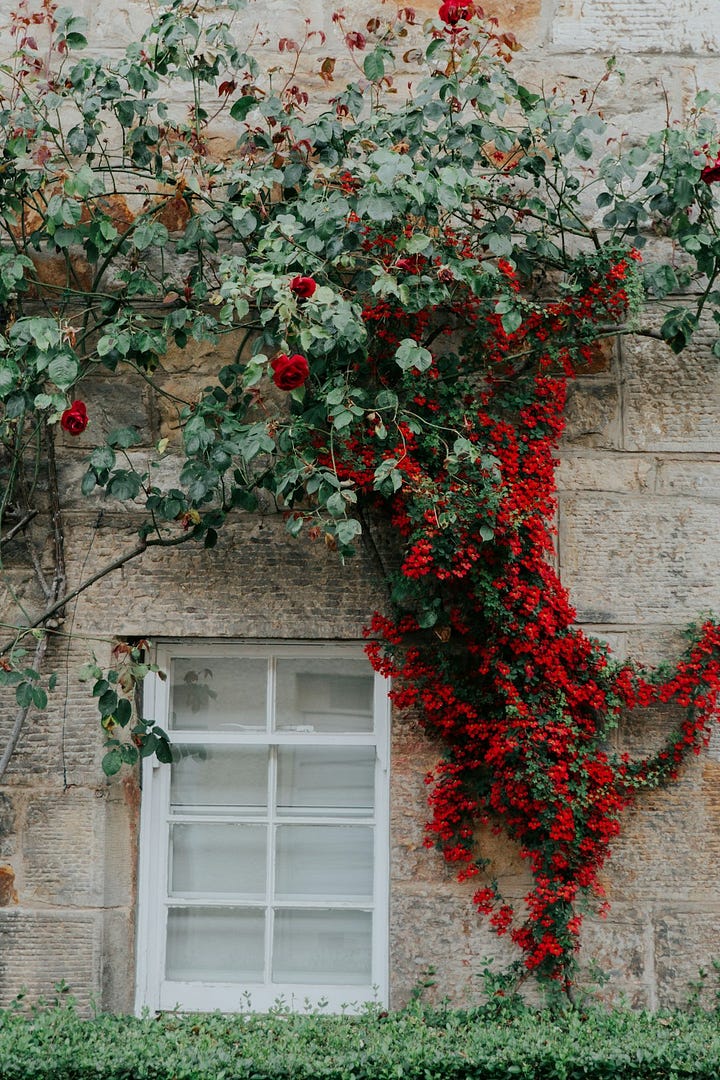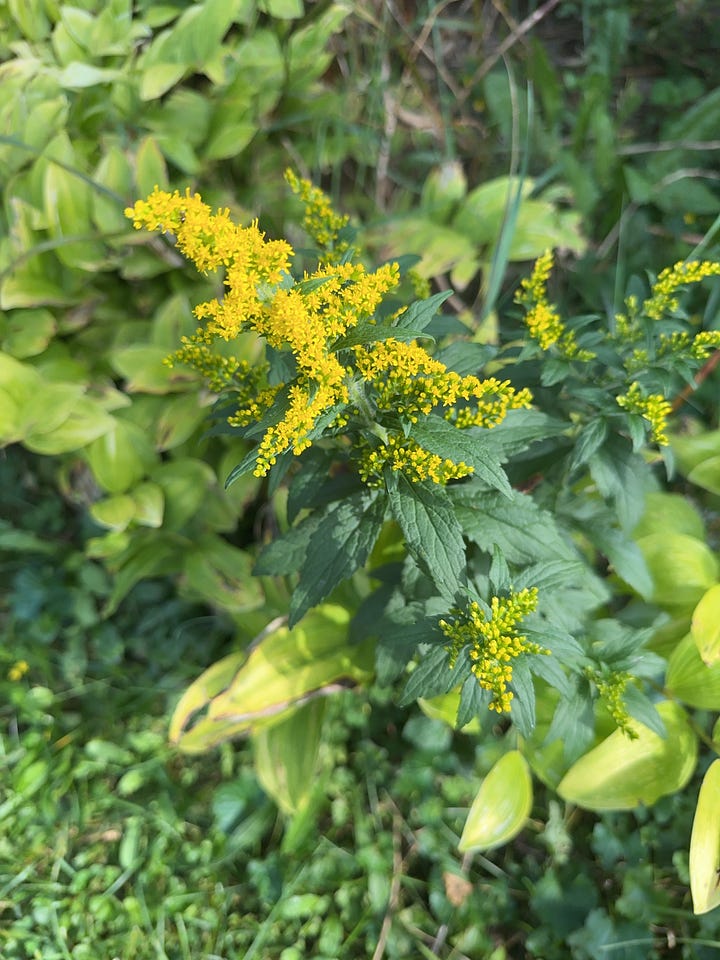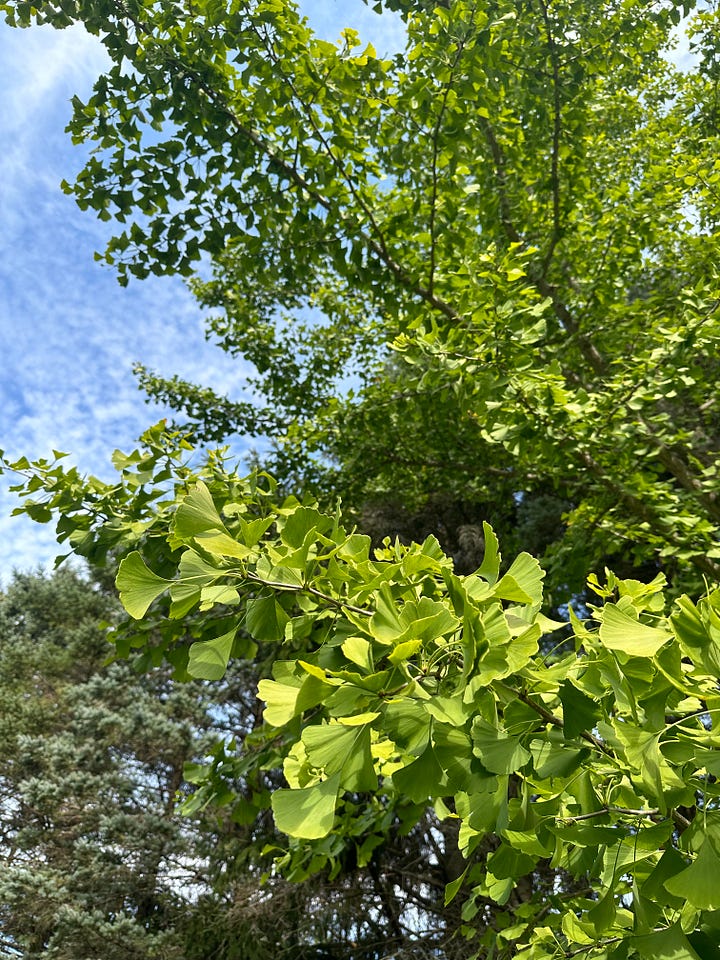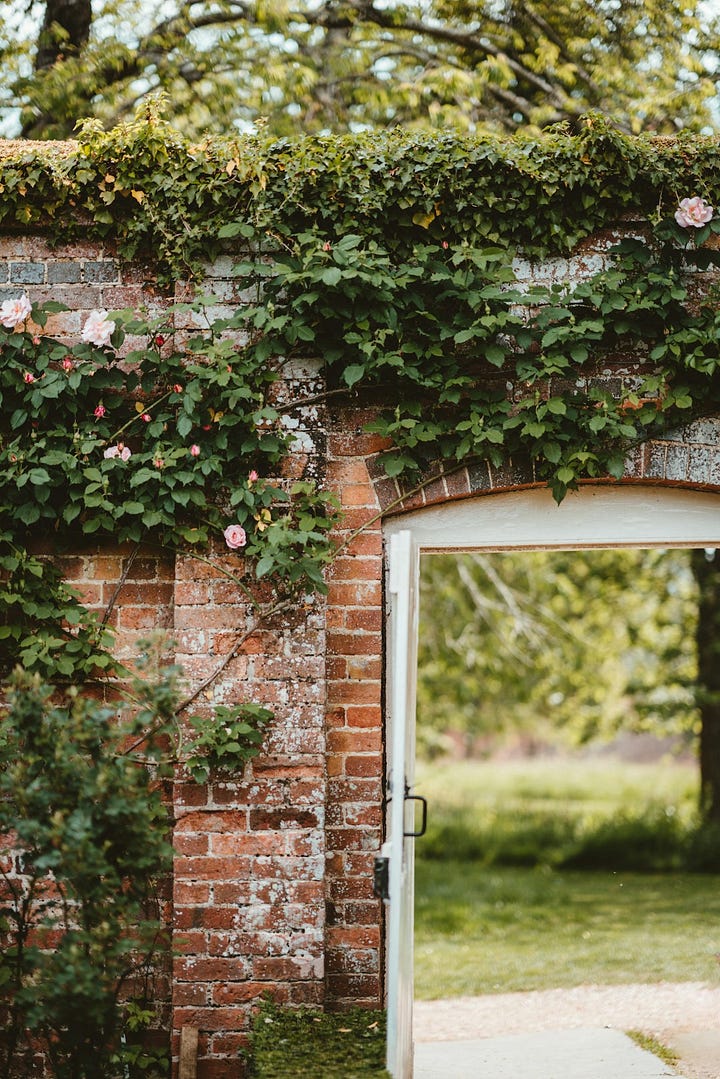Some time ago, I was walking through my grandmother’s garden.
I’m sure if she were reading this she would wave her hand and say “what garden!” or comment on how overgrown things are now that she stopped tending to parts of it.
I know I’ve never been a traditionalist when it comes to planting gardens - and as an herbalist, I typically let the “weeds” grow (particularly the medicinal ones) - but I really love a garden that is a bit wild. A garden with deep roots and a collection of native “volunteers” that are happily thriving with the others. And her’s fits the bill.
As I wandered aimlessly through my grandmother’s garden, I re-visited some of the plants and trees that have been woven into her stories and phone updates over the years.
The storied Ginkgo tree - much taller than I last remembered!
The old Oak tree - once such a small sapling and now large enough it threatens to overthrow the septic system.
The Lilac “bush” (now so tall it rivals some of the other trees) - whose blooms elegantly fill the corner window of the living room.
The odd Goldenrod plant - a quoted “unwelcome” volunteer that is not-so-secretly my personal favorite.
The patch of Cleavers - that one visit my mother had a very funny, surprise encounter with.
The ghost of the Blueberry bush - no longer there but forever a part of some of my fondest childhood memories (and one of my very first edible harvests).
It feels so different to walk through a garden and yard that has been nurtured for ages. The trees that hold more and more stories the taller they grow. The rich and varied plant life (including the ones that you resist that keep coming back and you finally give way to). The former beds that have been long overgrown but will always have a few blooms from ever-defiant bulbs. Maybe even the haphazard sculpture that was gifted and crafted by great aunt petunia-something-or-other - which you’ve been watching the moss partially reclaim for years now.
These kinds of gardens don’t happen overnight.
They take a lifetime of love, care, and letting go.
Yes, you can technically pay someone loads more money to transplant fully mature trees and other plants - so you can have your “mature” garden now, without waiting - but then you miss out on the magic that happens when you choose to grow with a piece of land for decades. When you watch your trees weather storms year after year. When those randomly scattered seeds surprise you in full flourish one day. When you take a step back and realize how that beloved flowering vine has beautifully taken over your wall.




In this day and age where nearly all of us expect whatever our hearts desire at the drop of a hat (Amazon deliveries, Uber Eats, any question answered via Google, et al.) - growing a garden from scratch actually becomes an act of defiance. These kinds of gardens are the antithesis of immediacy culture. They demand that you love them long & slow — sitting back in your rocking chair through the seasons and tending to them as needed. You can’t snap your fingers and make sure your rose bush is blooming on Valentine’s Day. You can’t expect your sapling trees to immediately take to their new home and bear fruit the next season.
Just like when we move homes, plants often need a little extra time to settle in. It often takes extra time at first for them to bloom and fruit. And they do so on their time, not our time. (May this be a reminder to give ourselves the grace + time we need too - especially after we experience a major life transition like transplanting ourselves in a new location).
Tending to a garden long-term also means that you will be nurturing a long-term relationship with that garden (the kind of relationship can be of your choice - whether your garden feels more romantical for you or if it feels more like caring for a beloved grandchild). But just like any relationship, you can’t always be sure what direction things will grow and how things will look 10+ years from now. This is where the “letting go” element comes in. We give love, care, and nurturance - but we also step back and let things grow how they please (with perhaps some guiding and pruning along the way). We let their personalities come forward and we observe their wild + beautiful changes over the years. We start to mark time based on how overgrown things have become or how now certain trees rival the height of the house.
The relationship is dynamic and it gives you back so much more than what you put in to it. But you do have to invest time and practice patience. And hold the foresight of the future. Understanding that the garden is never fully yours, but ultimately a gift to the land that you are a steward of for however long.

Several weeks ago I was taking a break between appointments looking out over a field with my father. We both marveled at how beautiful the big live oak tree was in the middle of it, dappled with morning sunlight. He mentioned the small, young live oaks in front of his house. How they have grown so much since their planting 5 years ago, but still just babies compared to this giant before us. How by the time they are fully mature, he will be long gone. How it feels bittersweet to know that he won’t be around to appreciate their full beauty when the time comes, but that regardless he loves that they are there.
Every house in his community had 2 small live oak saplings planted in front of them when the neighborhood was developed, but many of his neighbors decided to rip theirs out and replace them with fully established palm trees or other fast flowering ones. But for anyone who has appreciated the wild beauty (and luxurious shade) of a live oak tree in the South - you would know what a gift it would be to have your street lined with them decades later. The trees were a gift not so much for this first generation of home owners, but more for those who follow later. But it is up to the first generation to see and understand that vision. To steward the land and remember that everything they give into it will be (hopefully) re-appreciated for many more years to come.
I’m reminded of that famous quote (attributed to Audrey Hepburn, but I have my doubts she was the first to say it…) that goes:
“To plant a garden is to believe in tomorrow.”
By the time some of your garden is fully mature, so will your bones be.
But your garden is not really yours - it is your gift for those who follow. And what an important and beautiful gift that is.
What have you planted with dreams of tomorrow? Or what would you plant in your legacy garden if you had one now?
xx
Heather




I love ginkgo trees and planting them from seeds is actually a good thing because it leads to more genetic diversity. Mature ginkgo trees sold at nurseries are often clones of one tree. This means they have low genetic diversity so like the gros michel banana if one can get a disease they all can because they are all clones. Where as growing a ginkgo from seeds you get to witness a tiny seed becoming a large tree. And you get more genetic diversity due to genetic recombination and genetic mixing and increased chance for mutations. This means ginkgo trees grown from seed one may be weak to a disease and die while another may be resistant and survive this makes the ginkgo tree population more resilient. Female ginkgo trees while stinky are a good thing because they make seeds and are not grown from clones in most cases. From seeds ginkgo trees have a 50% chance to male or female. You can buy ginkgo tree seeds or baby ginkgo trees online on websites such as Etsy for a few bucks. Ginkgo trees are actually endangered in the wild in Asia where they originate. This means by growing ginkgo trees we can help an endangered and amazing species! They can grow in zones 3-9! And ginkgo trees are tough trees! Ginkgo trees were around during the dinosaurs and have barely changed! Ginkgo trees have been around for roughly 270 million years! Ginkgo trees are the only living member of their genus, family, order, class, phylum this means they have no living close cousins! As humans it’s important we grow these amazing trees and keep them alive for generations to come!